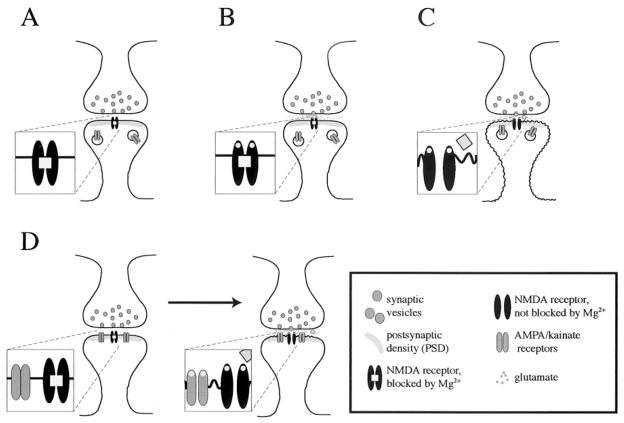Figure 6.
Ionotropic glutamate receptors and synapse stabilization. (A) Initially, NMDA receptors are in the postsynaptic membrane, while AMPA/kainate receptors are in the cytoplasm. (B) At glutamate release the NMDA receptor binds glutamate but does not pass ions because Mg2+ blocks the channel. The postsynaptic membrane does not depolarize. (C) A coincidence of glutamate release and depolarization opens the NMDA receptor and removes the Mg2+ block. Ions pass and AMPA/kainate receptors get recruited into the postsynaptic membrane. (D) The postsynaptic membrane contains NMDA and AMPA/kainate receptors. At glutamate release, AMPA/kainate and NMDA receptors get activated. AMPA/kainate receptors provide a local depolarization that removes the Mg2+ block from the NMDA receptor. Ions pass through the NMDA receptor.

